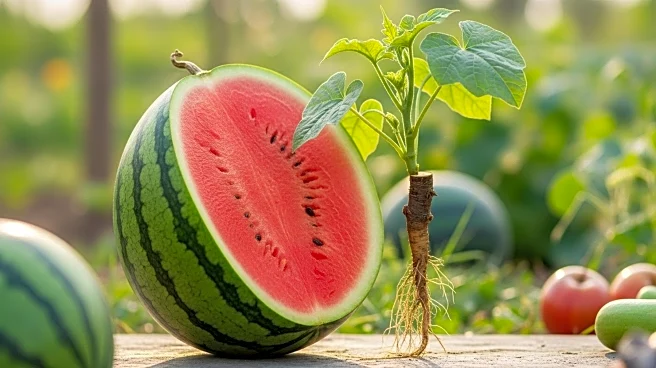What's Happening?
Australia's watermelon industry has developed the capability to produce watermelons year-round, thanks to advanced grafting techniques. Queensland and New South Wales are the leading states in watermelon production, but the crop is grown across the country. Grafting, which involves joining the scion of one plant with the rootstock of another, has become prevalent, enhancing plant vigor and yield. This method has increased fruit production by up to 25%, according to the University of California. The practice helps manage soil pathogens and improve crop health, leading to more uniform yields. Australian growers face challenges from diseases like anthracnose, fusarium, and powdery mildew, but integrated pest management programs and resistant varieties are being used to combat these issues.
Why It's Important?
The ability to produce watermelons year-round is significant for the Australian agricultural sector, as it ensures a steady supply to meet domestic demand. This innovation supports the local economy by stabilizing prices and providing consistent employment opportunities in agriculture. The use of grafting techniques not only boosts production but also enhances the resilience of crops against diseases, which is crucial for maintaining high yield and quality. This development could serve as a model for other regions facing similar agronomic challenges, potentially influencing global agricultural practices.
What's Next?
Australian watermelon growers are likely to continue refining grafting techniques and exploring new resistant varieties to further enhance production. Collaboration between farmers and researchers will be key in developing innovations that protect crops and improve yields. As the industry adapts to changing consumer preferences and environmental conditions, ongoing research and development will be essential to sustain year-round production.
Beyond the Headlines
The widespread adoption of grafting in watermelon production highlights the importance of agricultural innovation in addressing climate-related challenges. This approach not only improves yield but also contributes to sustainable farming practices by reducing reliance on chemical treatments for disease management. The success of these techniques may encourage other sectors to invest in research and development to enhance crop resilience and productivity.











